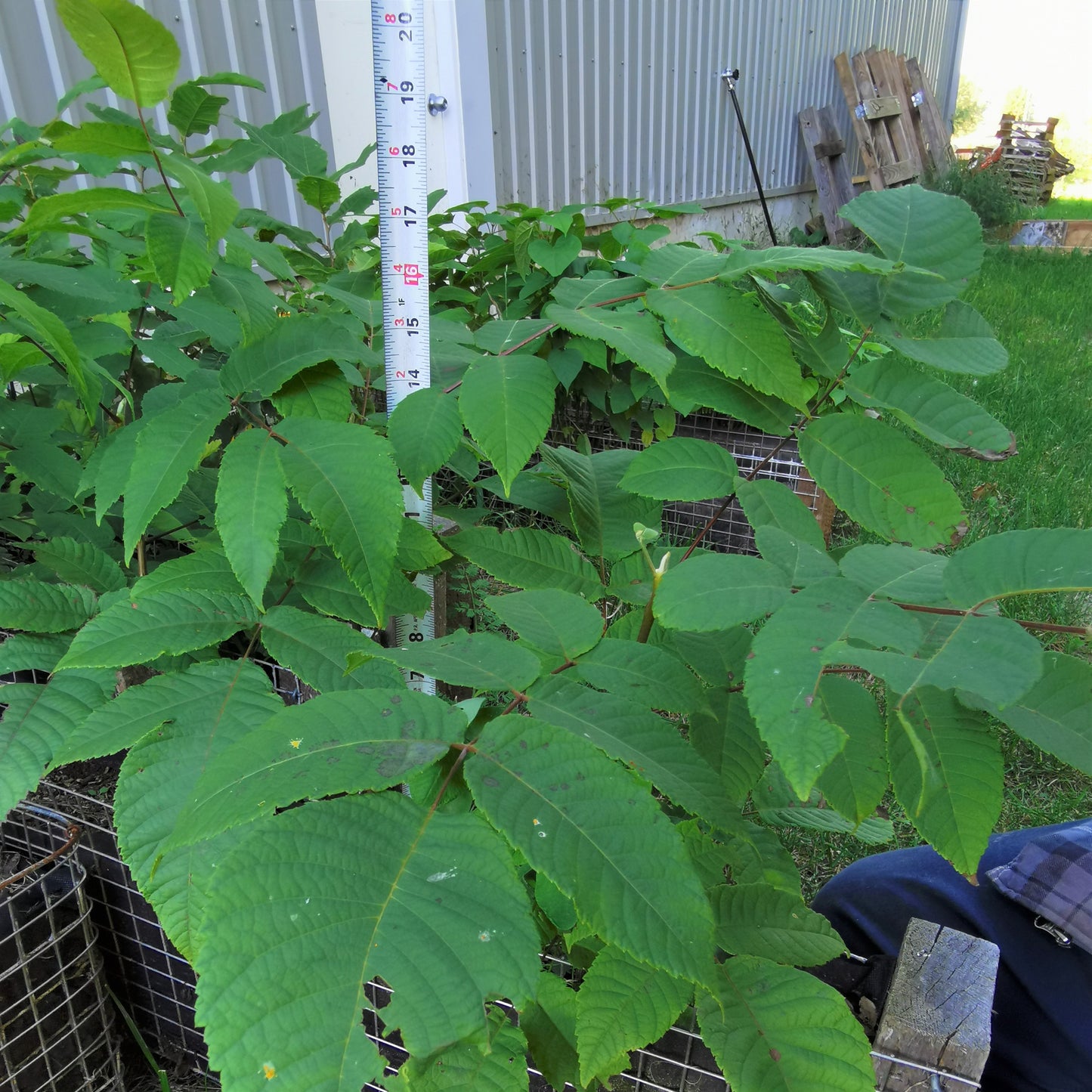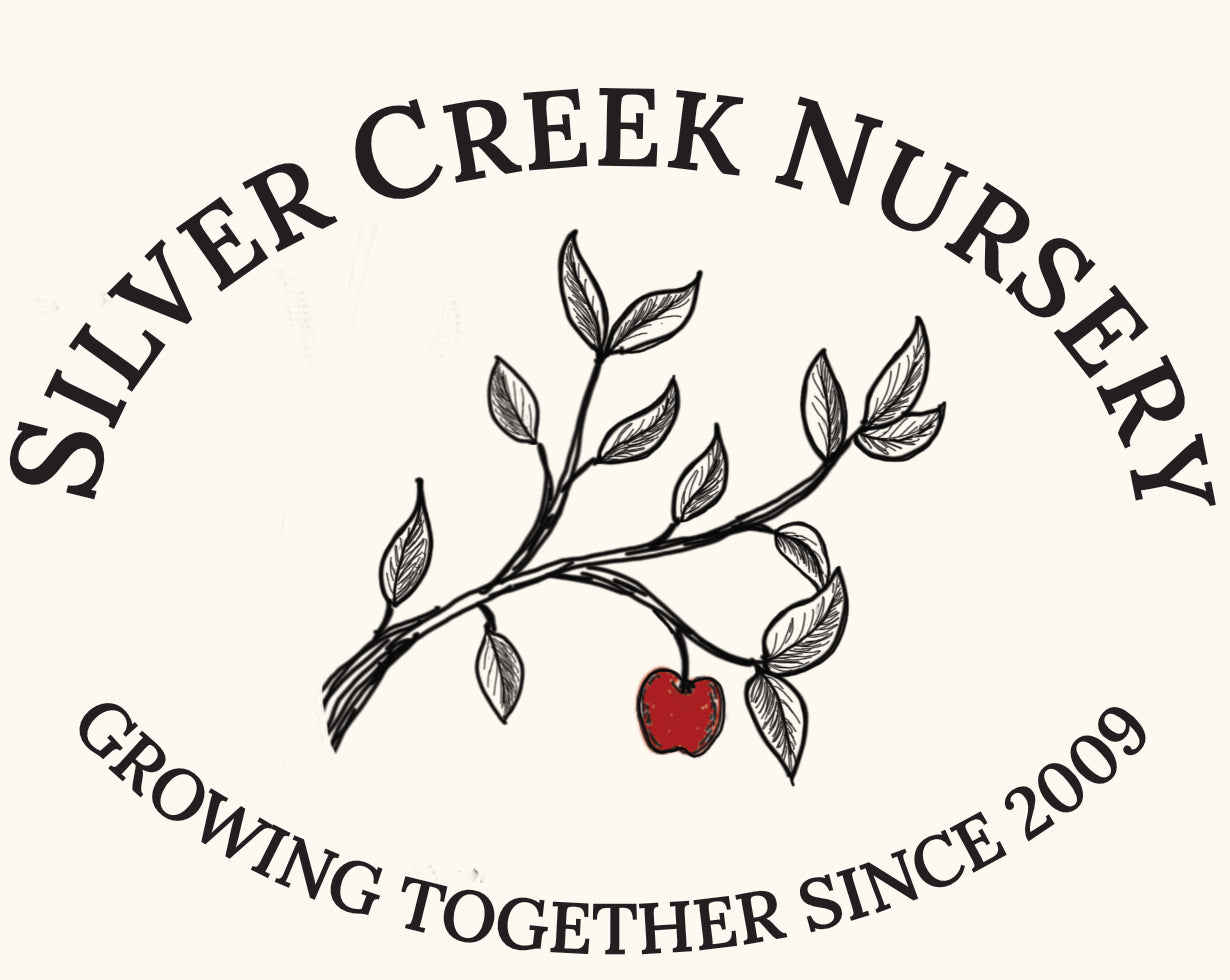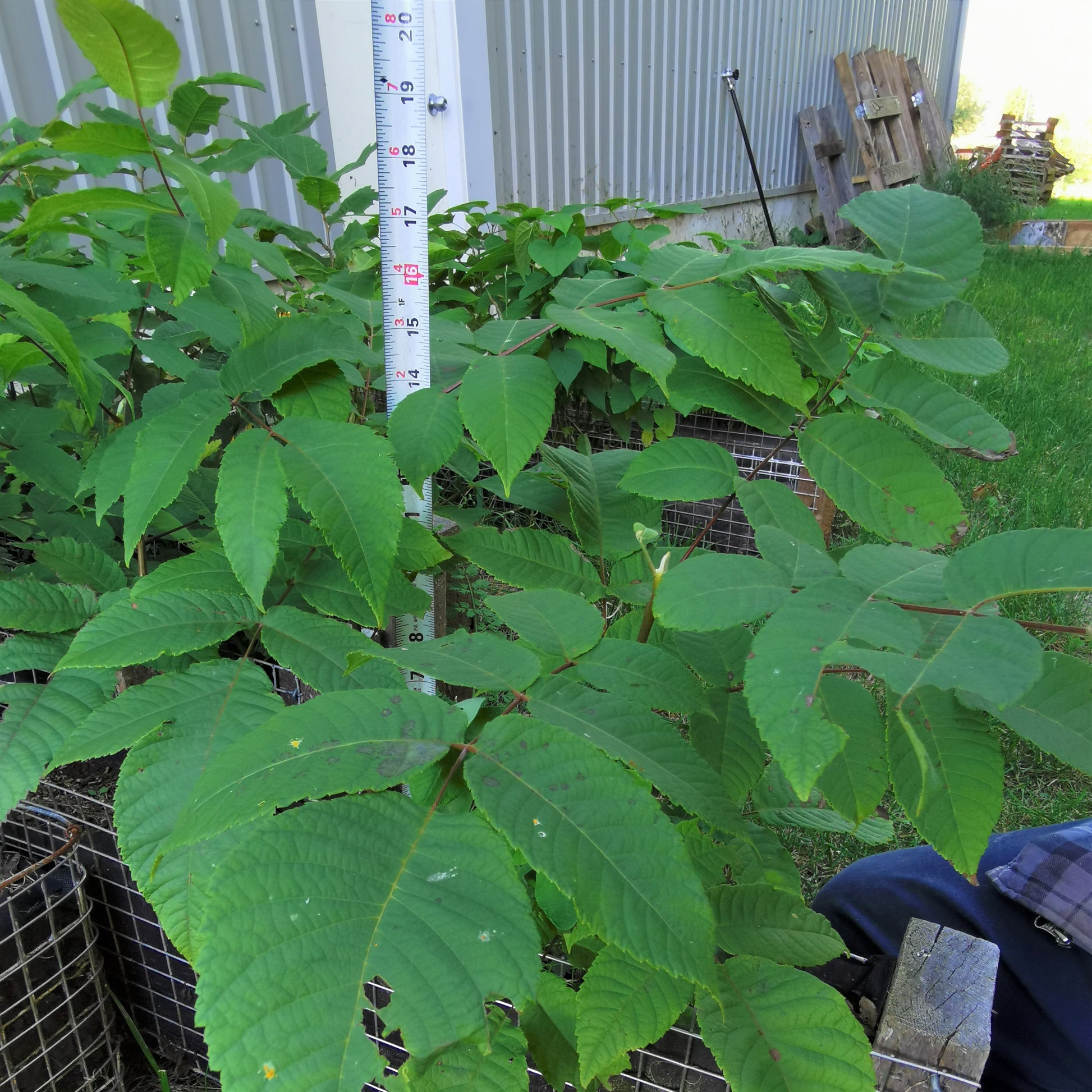True Root Nursery
Butternut Seedling
Butternut Seedling
Species: Juglans cinerea or hybrid. NOTE: Butternuts are known to hybridize readily with other closely related species so there is no guarantee on whether these seedlings are pure, though the mother trees appear very true to type.
History: Butternut is an endangered tree native to southeastern Canada and the eastern United States where they grow naturally along sunny stream banks with rich, well-draining soil. The nuts have been used as a source of food and made into a butter-like oil by indigenous peoples. The trees have also been used for making syrup, furniture, and woodcarving. 'Butternut' became a derisive term for people living in the southern US since their clothes were dyed using butternuts, and the name later applied to Confederate soldiers. Unfortunately, Butternuts are highly endangered today due to Butternut Canker which has decimated their population within two decades.
Why We Grow It: By planting endangered species, collectively we can help Mother Nature potentially find a naturally resistant variety of Butternut. The nuts are quite similar to other walnuts but with a milder flavour. They can survive in zone 2, but they must be within zone 3 to produce nuts. The sap can be boiled to make walnut syrup, which tastes very similar to maple syrup but with notes of caramel and butterscotch.
Be mindful of the juglones in the in the roots/nut husks, they are toxic to many other species. They require a buffer of about 50'/30m from the edge of the trees canopy for juglone-sensitive plants. This article from The Garden Hoe has a helpful list of plants that tolerate juglones. However there are recent (2019) studies showing healthy soil high in organic matter and mycorrhizal fungi actually reduce the toxicity of juglones suggesting many plants can grow below juglans species in a healthy ecosystem - it will be interesting to see more study done in this area!
Fruit Specs
Fruit Specs
Recommended Use: Nuts used for fresh eating, cooking or baking, or syrup enjoyed as you would maple syrup.
Fruit Size:
Storage: Nuts keep up to three months in the fridge, syrup can be stored for about a year in the pantry
Harvest: March for syrup, October for nuts
Growing Specs
Growing Specs
Canadian Hardiness Zone: 3
Soil Preference: Prefers loam but adaptable to different soil types
Flowering Time:
Bloom Colour:
Pollination Requirements: Self-pollinating, this tree will produce nuts without a different Butternut tree present but will produce more and better nuts if one is present
Sun/Shade Requirements:
Full sun (approx. 8-10 hours of sun daily)
General Growth Habits:
Tree generally reaches 20m but can grow up to 40m in some cases, slow growing. Very susceptible to Butternut Canker.
Shipping vs. Pick Up
Shipping vs. Pick Up
CLICK HERE to see how shipping compares to pick up.
Shipping: Every year we ship thousands of trees across Canada (except BC due to CFIA regulations). We carefully bag roots in damp sawdust, then box them and send them out via courrier. CLICK HERE to see our shipping policy.
Pick-up: We also have thousands of trees picked up from our nursery each year. The pick-up options is free, though you must wait until you have been emailed a confirmation that your order is ready to pick up, which will have further information such as hours, locations, etc. We really appreciate if you can make an appointment to pick up, then we can be as organized as possible during our busy season.
Size at Purchase
Size at Purchase
Our ungrafted fruit tree seedlings, nut tree seedlings, berries, and other miscellaneous plants are categorized into the following sizes excluding the roots:
- 5-15cm
- 15cm+
- 30cm+
- 60cm+
- 90cm+

All of these heights exclude the roots since seedlings and some berries will often have a lot of root growth but relatively little vegetative growth (ex. our Shagbark Hickories seedlings are often 5-15cm above the soil but will have roots that reach 20cm+ in length).

Not all of our berries and seedlings will be available in all of these grades since growth rate can vary significantly across species and even varieties. While we remain competitive in our plant size, it's also worth noting we don't use synthetic chemicals to push vegetative growth, therefore you may find conventional nursery stock larger in some instances comparatively.
Orders that are cancelled last minute due to size (being "too small"), will still incur the applicable cancellation fees if the plants are true to our grading standards as per the agreement of sale when the order was placed.
Couldn't load pickup availability
Share


